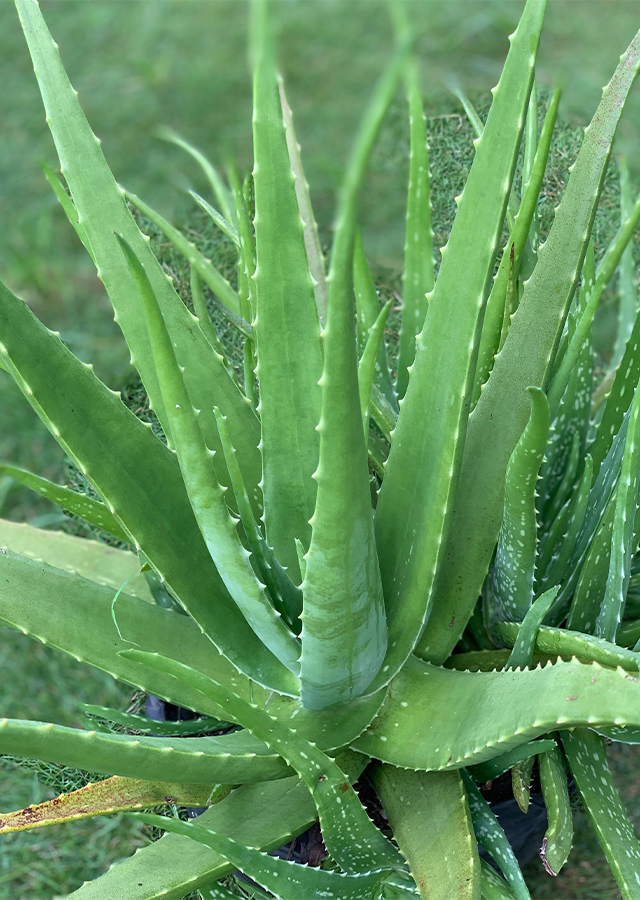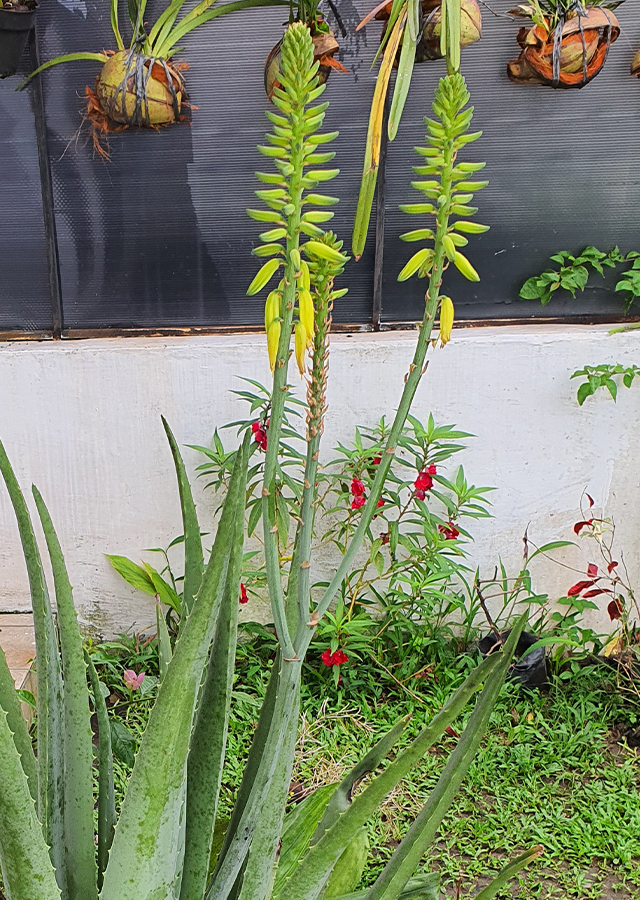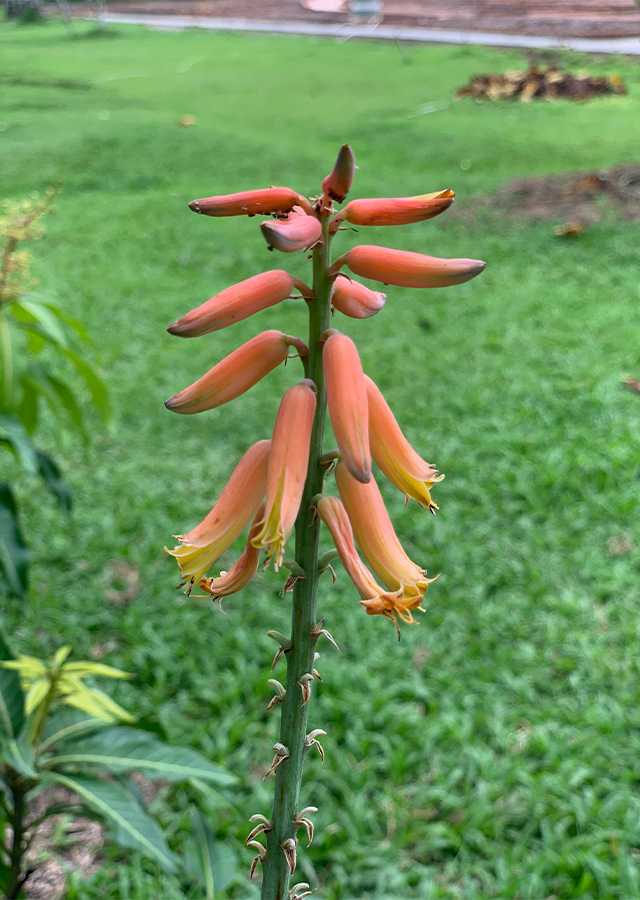Aloe Vera
Aloe vera (L.) Burm.f.
Asphodelaceae
Location in our garden
Principal



Synonym
Aloe barbadensis Mill.
Aloe chinensis Loudon
Aloe elongata Murray
Habitus
Succulent. A succulent, evergreen perennial shrub that can be stemless, up to 80 cm tall.
Part Used
Leaves
Latex
Growing Requirements
Full Sunshine
Need Shade
Drought Resistant
Habitat
Coastal
Rocky Areas
Shrublands
Grassland
Overview
Aloe vera comes from the Arabian Peninsula and from Sudan. Species are widely cultivated in the Near East, Northern Africa, the Southern Mediterranean region and Asia at present. The benefits of Aloe vera, which has been recognised for centuries for its medicinal benefits and healing properties for more than 4,000 years, have been illustrated by ancient documents. Aloe vera is also grown as a pot plant throughout Malesia.
Vernacular Names
Nub átussibi (Arabic), Lúhuì (Chinese), Aloès amer (French), Aloe (German), Korphad (India), Sabila (Tagalog), Crocodile tail (Thai), Nha dam (Vietnamese), Lidah Buaya (Malaysia and Indonesia).
Agroecology
It can be grown outdoors from the warm temperate zone to the tropics. It grows best in areas where daytime temperatures are 19-27 ° C per year but 10-35 ° C can be tolerated. Average annual precipitation in the range of 1,900-3,000 mm is preferred, but 700-4,000 mm is tolerated. A sunny location is preferred, but light shade can be tolerated. They prefer rich soil, but they are tolerant of poor soil. A pH in the 6.5-7.5 range is favored.
Morphology
- Stems - very short stemmed succulent, 50 cm which possess twenty five leaves in an upright dense rosette. Taproot with many secondary roots in the upper soil that freely forming and suckering dense groups.
- Leaves - It is fleshy, 6 to 7 cm thick and 40 to 50 cm long. The upper surface is gray- green, concave with a reddish tinge that occurs in young plants in patches, lower surface generally lighter. The leaf margin has a light pink edge, deltoid and the pale teeth are 2 mm long.
- Flowers - Simple inflorescens or sparsely branched, on a spike up to 90 cm long, bloom in summer. Each flower has a yellow, orange or red tubular corolla measuring 2 to 3 cm long and is pendulous. Up to 160 cm long, it can grow a flowering stem.
- Fruits - a trigonous capsule like a fruit, divided into three segments and measuring 15-17 x 7-8 mm.
Cultivation
- Propagated by seeds. The seed normally germinates at 16 °C within 1-6 months.
- When available, it can also be propagated by division of offsets. When they are 15-20 cm long, they can be cut from the mother plant.
Chemical Constituents
Ascorbic acid, aloin (barbaloin), arabinose, aloe- emodin, aloetin acid, emoin, aloeresin A-C, aloesone and others.
Traditional Medicinal Uses
- It has healthy benefits for hydrates body, oral mucosal diseases and prevent hepatitis.
- Acts as antioxidant, prevent digestive issues, strengthen immune system, and also used for skin health, and treat nausea.
- A clinical trial with advanced solid tumor patients is successful.
- Clear gel treatment speeds up the healing rate and decreases the risk of cuts, burns, and haemorrhoids becoming contagious.
- The plant is emmenagogue, emollient, stimulant, stomachic, tonic, vermifuge, laxative, purgative and vulnerary.
- The Chinese use the juice of the plant as a mild laxative, pile wash, abscesses, and scabies.
- It is used to treat dysentery and pain in the kidneys in the Philippines.
- It is used in Malaysia to treat wounds, fever, swelling and to place on women's abdomen after containment.
- It is used to relieve pain in Ayurveda and is also listed for diabetes control in Arabian Peninsula folk medicine.
- To increase menstrual flow, the juice from the leaves is utilized.
- New leaf juice is cathartic and cooling and is used for different eye diseases.
- The fresh leaf juice is considered purgative, anthelmintic, depurative and an emmenagogue in the Indo-China.
- In Papua New Guinea, the juice is used internally to treat stomach ulcers.
- The dried leaf sap can produce a dye.
Part Used
Reference Sources
- Royal Botanic Gardens. Plant of the World Online: Aloe vera (L.) Burm.f. https://powo.science.kew.org/taxon/urn:lsid:ipni.org:names:530017-1. 06-07-2019.


